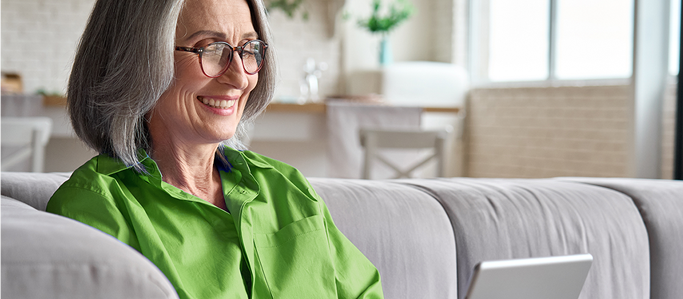How earplugs can help you | Connect Hearing

How earplugs can help you | Connect Hearing
7 min.
Publication Date: January 27, 2021
Earplugs have an array of benefits. They improve focus and the quality of rest, and help protect your hearing — both in the short and long term. Because there are many types and many ways to use them, this guide explores materials, costs, usage, noise reduction, when to use them, how they work, insertion techniques and where the best models are available.
Fortunately, earplugs are widely available, easy to use, and a great solution to many situations. They are proven to aid ear health in the short and long term, and also improve concentration and relaxation and increase your overall quality of life.
Below is a set of the most commonly asked questions about earplugs:
What types of earplugs are there?
Types of earplugs vary; pending purpose and material. Noise reduction earplugs are most common. Specialized earplugs also block water, regulate pressure and filter different sound frequencies. There are also earplugs for tinnitus.
Common materials include foam, wax and silicone. Earplugs for noise may also be made of cotton, putty, ceramic and vinyl. Some are built with layered air pockets and membranes, as well as strings to remove them or keep them together (so one is not lost).
Here are the most common materials:
- Wax – Natural, malleable and shapeable. Conforms easily and is water repellant, too.
- Silicone – Reusable and lightweight. Most customized or fitted earplugs are silicone.
- Foam – These soft earplugs are generally cheapest. They’re also disposable, because bacteria breed so easily on them.
Other considerations are based on how the earplugs fit. Are they comfortable? If they’re too small, they’ll slide out. And if they’re too big they’ll irritate your ears. Generally, the better the fit, the better the noise reduction.
Some earplugs are also bell shaped or tapered, while others completely seal the ear’s entrance. These expand in different ways and also create pressure differently within your ear. Weights vary too, so you may need to experiment.
A final note: most earplugs are also designed with bright colors, so that others can see you’re wearing them (and not wonder why you’re ignoring them).
How much do earplugs cost?
A wide range of prices are available, depending on the material and manufacturer.
Where are the best places to use them?
Earplugs can help in a number of situations, including at concerts and in clubs, in noisy homes and while studying at school, while working with heavy machinery, while traveling on motorcycles and flying in planes, when shooting guns, when sleeping and even in the water.
Sleep — Lost sleep is detrimental to health. Exhaustion affects your physical and mental states, your productivity and creativity, recovery and the immune system. Sleep can be disrupted by street noise, loved ones, roommates and more. Earplugs for sleeping reduce these noises, without eliminating sounds like alarm clocks. They also are designed for comfort in extended wear.
Focus — Noise at home, at school and in the office can affect concentration, reduce productivity and create stress. Earplugs for these environments fade sound to less intrusive levels, without limiting
Music — Earplugs for music are generally more technologically advanced. Concertgoers and musicians face the same challenge: protect their ears, without losing sound quality and things like timbre, treble and bass. Music earplugs commonly feature membranes which filter (attenuate) sound at varying frequencies (or pitches), instead of blocking it completely.
Travelers — Motorcycles, loud watercraft and airplanes can all produce damaging levels of sound. Motorcycle earplugs are often designed to be worn under helmets, and to work in tandem with intercoms. Earplugs for airplanes often protect the ears from cabin pressure fluctuations.
Water — Pool chemicals and bacteria, ocean waves and cold wind can all impact and damage your ear canal, leading to swelling, itching and conditions like Swimmer’s Ear and Surfer’s Ear. Many earplugs for swimming are designed primarily to keep water and wind out.
Machinery — Farms, construction sites and factories all are home to heavy machinery which can be quite damaging — so hearing protection earplugs are vital. But gardening equipment and home improvement tools can also be troublesome, because they create excessive sound levels which can also be numbing. Earplugs for labor are commonly ventilated and designed to be worn all day.
How much do earplugs reduce noise?
NRR is noise reduction rating. It is standardized and measured in decibels (dB).
Anything below 80 decibels is generally considered safe. Soft noise is about 20 dB. A conversation on the street may be 40 dB, though one in a noisy restaurant can hit 90 dB. A moderate snorer can be 50-60 dB, though it can similarly rise as high as 90 dB.
Concerts, heavy machinery and gunshots all typically exceed 100 dB.
Most earplugs reduce sound by 10-30 dB. Common earplug protection levels include 15, 20 and 25 dB. Earplugs do it in different ways though.
Some are designed to reduce steady background noise, some mask all noise, some filter sound and still others are designed to protect against sharp bursts.
How many decibels do foam earplugs block?
Foam plugs typically block 20-30 dB of sound.
Can earplugs damage ears?
There is little danger to using earplugs. (They are ear defenders, after all). Irritation may occur if you are new to using them. And if you use sleeping earplugs you may wake up with sore ears — especially if you sleep primarily on your side.
Earplugs can also lead to tinnitus and ear infections. When worn regularly, they can push earwax deeper into your ear canal, where it builds up. This can lead to temporary hearing loss and ringing in the ears (tinnitus).
Ear infections can be caused by wax buildups too, as well as from bacteria on the earplugs themselves. Be sure to keep your earplugs clean and do not reuse disposable earplugs.
If you feel any pain in your ears, or if you experience any hearing loss consult a doctor immediately.
How should I insert earplugs?
While the process is simple, there are a few techniques which will improve your comfort and your earplugs’ effectiveness.
First, make sure your hands are clean. Then roll the earplugs between your fingers to compress them — like a snake or a cone. Once they’re thin enough to fit in your ear, pull your ear lobe away from your head. You should insert the earplugs just deep enough to block sound. Don’t wedge them in too deep. They should be comfortable.
After you insert the earplugs, use your opposite hand to pull on the top of your ear. This will straighten out your ear canal. Use your finger to hold the earplug in place until it expands.
You will know the earplug is properly inserted and sealed when your own voice sounds muffled.
How many times can earplugs be used?
Check the packaging for detailed information. The material used is the primary factor. Silicone earplugs, for instance, are generally the most durable and the easiest to clean. Some eco-friendly earplugs can be used 100 times or more.
Most foam earplugs, meanwhile, are designed to be disposable. Bacteria build up on them quite easily.
If the packaging indicates your earplugs can be reused, make sure to keep them clean. Rinse them with cold water after every use, and gently apply a little soap.
Where can I buy earplugs?
If you’re wondering where to buy earplugs, AudioNova has a full line designed for a variety of situations — from surfing to yardwork, and sportshooting to concertgoing.
Before you buy new earplugs here are some things to understand. Whether you’re struggling to focus at home or at the office, surrounded by heavy machinery and vehicles, travelling on planes and staying in unfamiliar hotels, or just in need of a good night’s rest amidst loud noise — earplugs can help.
There are dozens of varieties and types available on the market today — earplugs for snoring, earplugs for kids, noise-canceling earplugs and more — and there are just as many factors to consider when choosing them. It can be a lot to sort through.



